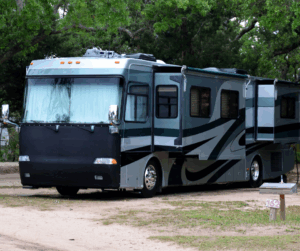How To Drive Recreational Vehicles (RVs) Safely
June 17, 2025
 Recreational vehicles (RVs) offer freedom and adventure, making them a popular choice for road trips and vacations. However, operating an RV requires special care due to their size, weight, and unique handling characteristics.
Recreational vehicles (RVs) offer freedom and adventure, making them a popular choice for road trips and vacations. However, operating an RV requires special care due to their size, weight, and unique handling characteristics.
Whether you drive a motorhome, travel trailer, or camper van, practicing safe driving is essential to protect yourself, your passengers, and others on the road.
Know Your Recreational Vehicle
Before setting out, take time to understand your RV’s dimensions and weight. Know the vehicle’s height to avoid low-clearance bridges, and be aware of weight limits, especially when traveling over bridges or entering campgrounds.
Check your owner’s manual for specific handling instructions and maintenance schedules. If towing a trailer, ensure your tow vehicle is rated for the load and the hitch is properly secured.
Perform Pre-Trip Inspections
Before every trip, conduct a thorough inspection of your RV. Check tire pressure and tread condition, test lights and signals, inspect brakes, and confirm that mirrors are properly adjusted.
Ensure that your load is balanced and secured. Loose items can shift and affect the vehicle’s stability. Also, verify that all tanks—fuel, propane, water, and waste—are functioning safely and not overfilled.
RVs Require More Time and Space to Accelerate, Brake, and Turn
Keep a safe following distance—at least five to seven seconds behind the vehicle in front of you. Use your mirrors frequently and be extra cautious when changing lanes or merging.
Always signal well in advance to give other drivers plenty of notice. Avoid sudden movements, especially in adverse weather conditions or heavy traffic.
Slow Down and Take Breaks
Speed limits for RVs may differ from passenger cars, particularly in states that regulate vehicle classes. Drive at a comfortable, controlled speed—generally between 55 and 65 mph on highways.
Fatigue is a major factor in RV accidents, so take breaks every 2-3 hours and switch drivers if possible. Pull over in safe areas to rest, eat, and stretch.
Mind Corners and Turns
Due to their length and height, RVs require wide turns. Always swing out slightly on right turns to avoid hitting curbs, signs, or other vehicles. Watch your rear overhang, which can swing in the opposite direction of your turn.
When backing up, have a spotter guide you, or use a backup camera for added safety.
Weather Awareness
Wind, rain, snow, and ice can seriously affect RV stability. High winds can push tall vehicles off course, while wet roads increase braking distances. Avoid driving during severe weather and reduce speed in adverse conditions.
Plan routes ahead of time to avoid steep grades, narrow roads, and areas prone to flooding or extreme weather.
Educate Yourself on RV Driving and Practice
If you’re new to RV driving, consider taking an RV driving course. Many organizations and dealerships offer classes that cover driving techniques, safety protocols, and maneuvering skills. Practice in empty lots or low-traffic areas before hitting the road.
Safe RV driving starts with preparation, caution, and awareness. By respecting your vehicle’s limits and staying focused, you can enjoy the open road with confidence and peace of mind.
When it comes to the insurance, we can answer your questions. We’ll help you select the right RV insurance for a price you can afford. And we offer Comprehensive and Collision options, Personal Effects Coverage, even Vacation Liability coverage.
So enjoy that summer road trip by driving safely and with the peace of mind of having the right recreational vehicle insurance for you.
Until next time,
Your SZW Team
SZW Insurance is your Utica area Trusted Choice™ independent insurance agent. Call us for a quote on insurance for your home, car, business, or life at 315.792.0000. Or request a quote here.



